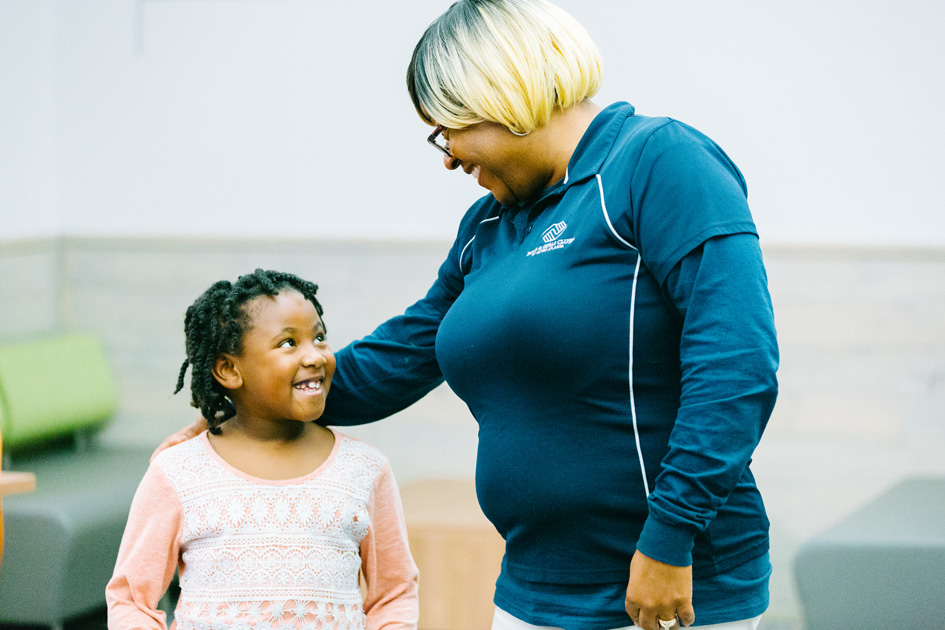Today’s youth show promise as our future leaders, already serving as powerful catalysts for change on issues that are important to them. Adult allies can support youth voice through advocacy and by offering long-term assistance as young people work to be heard and respected for their steps toward change.
At BGCA, safety is our number-one priority. Amidst national conversations on school violence, safety, and youth advocacy, we’re organizing with fellow youth-serving organizations to ensure the physical and emotional safety needs of young people are met.
We can’t do it alone. Here’s how you can help support and amplify the voices of the young people who will shape our world:
1. Amplify their voices, not yours.
Tell youth their voices matter—and mean it. As adult allies, it is essential that we create spaces for youth to use their voices. Remember that the steps we take to empower young people must be about boosting their skills and ability to convey their own authentic message, not ours.
When advocating for the perspectives of youth, one helpful approach is to remove your own agenda from the equation entirely, and instead ask thoughtful questions that help young people clarify their own messages and goals. Adult allies can also take a direct approach of inviting youth to participate at the table with other decision-makers who can assist in bringing about change.
Long-term, young people may feel discouraged if they don’t see the immediate impact of their efforts. You can encourage youth by noticing their efforts and acknowledging their impact on the community.
2. Broadcast your willingness to be a “helper.”
Youth voice dies in a vacuum. Organize with other adult allies (like parents, teachers, community members, church leaders, Club staff, etc.) to find ways to signal to students that you are available and willing to support their voice. It can be as simple as clicking “share” when a young person speaks up on social media or making your own social media posts that express interest in partnering with and advocating for youth.
You can also take a more direct approach by asking young people what you can do to help. Consider using the following question: “If you had a partner to help you organize, what would you ask them to help you with?”
3. Acknowledge and assume competence among youth leadership.
When it comes to issues like school violence, many prevention and support tactics have been tried, but nothing thus far has brought a solution to the problem. It's time to acknowledge that the missing piece of this devastating puzzle might well be the students themselves. Following the leadership of students doesn’t mean you should never speak up or share your opinion, but try to maintain awareness of how your feedback can motivate or demotivate young people in their commitment to finding solutions to the issues that impact them.
Part of assuming competence means giving young people meaningful and respectful feedback when appropriate and providing a safety net when they make mistakes or their efforts don’t succeed. It’s also important to ensure that students understand the bigger picture when approaching complex subjects.
4. Don’t assume anything else.
It can be difficult to remember types of obstacles we faced as students and, let’s face it, most adults have never been forced to endure the level of fear that the threat of school violence presents in our current climate. When partnering with and working to empower young people, it’s important to acknowledge the following factors, both tactical and interpersonal:
- Scheduling: Youth schedules are different. 7 a.m. might be too early and 7 p.m. might not be too late. Ask youth what works for them.
- Transportation: Youth may need transportation support; offer to help coordinate transportation.
- Youth culture: Try to remain flexible and willing to adapt to the changing needs and interests of the young people you’ve partnered with.
- Group dynamics: Tailor your support tactics to suit the personalities of the youth you are partnering with; welcome humor when appropriate.
-
5. Be realistic about consequences.
Help youth to anticipate and understand how their advocacy may be perceived by others. Provide feedback, ask questions about how tactics and approaches fit into the bigger picture, and help students discuss and plan for how they will respond to negative and positive feedback.
It’s critical that adults inform students of potential consequences that may come from youth participation in advocacy tactics like school walkouts, marches, or other forms of peaceful protest. It’s also important that adults use our voices and influence to challenge those consequences when appropriate. Work to educate young people on their rights and equip them to navigate school and out-of-school settings.
Now is a powerful time for our nation. This upswell of youth advocacy presents an opportunity for adults to help youth voices be heard. Together, we can empower youth to be effective advocates, capable of making a meaningful difference on the issues that are important to them.
This guide has been adapted from resources from Youth ERA. To learn more, please visit youthera.org. Questions? Contact us at partnerships@bgca.org.




